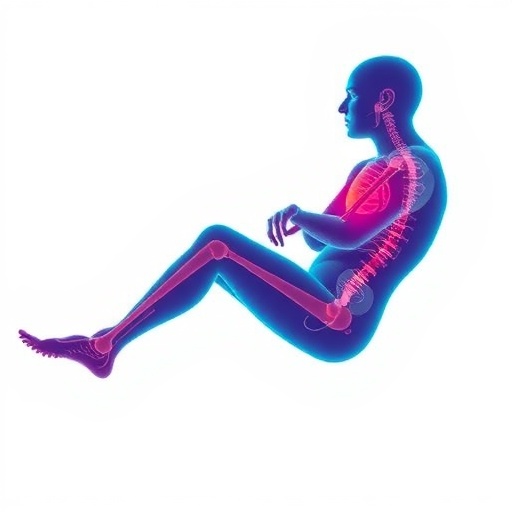Restless legs syndrome (RLS) and periodic limb movements (PLMs) have emerged as significant areas of concern in the broader context of cerebrovascular and cardiovascular health. Recent findings suggest a complex interplay between these sleep-related disorders and cerebrovascular pathology, particularly in relation to the risk of stroke. The bidirectional relationship between RLS, PLMs, and cerebrovascular events is increasingly supported by compelling evidence, drawing attention to shared pathophysiological mechanisms. This review delves into the intricacies of these relationships, emphasizing the need for heightened awareness in both the research and clinical domains.
Neurotransmitter dysregulation is one of the cornerstone mechanisms linking RLS and PLMs to cerebrovascular diseases. The role of dopamine has particularly garnered attention, as this neurotransmitter is pivotal in the regulation of motor control and sleep-wake cycles. Studies indicate that altered dopaminergic pathways in individuals with RLS can contribute to an increased vulnerability to stroke. This is not merely a correlation; rather, the implications of dopamine deficiency or dysfunction can have far-reaching effects on cardiovascular stability, thus highlighting a critical intersection between neurological health and cardiovascular well-being.
Alongside neurotransmitter dysfunction, autonomic nervous system dysregulation plays a notable role in the relationship between RLS, PLMs, and cerebrovascular disease. The autonomous control over blood flow and pressure can be significantly impaired in individuals suffering from RLS. The associated heightened sympathetic nervous system activity may result in persistent elevations in blood pressure and heart rate, which are well-documented risk factors for stroke. The dual existence of RLS and PLMs in these patients suggests a potentially vicious cycle where autonomic dysfunction exacerbates both the symptoms of RLS and the risk of cerebrovascular incidents.
Inflammation is another critical pathway that connects RLS and PLMs with cerebrovascular pathology. Current research has identified elevated inflammatory markers in individuals suffering from RLS, which may contribute to both neurodegenerative processes and vascular instability. Chronic inflammation is known to precipitate endothelial dysfunction, a precursor to various cardiovascular diseases, including stroke. The inflammatory profiles associated with RLS suggest that managing these symptoms may have broader implications for reducing overall cardiovascular risk and improving patient outcomes.
Moreover, oxidative stress represents yet another shared mechanism linking these two conditions. The oxidative stress paradigm is increasingly recognized for its role in various neurodegenerative and cardiovascular diseases. In RLS patients, there appears to be a significant increase in oxidative markers, potentially leading to neuronal damage and vascular complications. By addressing oxidative stress through various therapeutic strategies, there may exist opportunities to mitigate both RLS symptoms and cerebrovascular risk.
Hypoxia also warrants attention in the context of RLS and PLMs. Sleep disturbances are often characterized by impaired oxygenation during the night, which can exacerbate cerebral hypoxia. This is particularly relevant for individuals who have pre-existing risk factors for stroke or who have suffered transient ischemic attacks. The interplay of nocturnal oxygen desaturation and RLS symptoms can create a precarious situation where the risk of both recurrent RLS symptoms and vascular complications converge.
New technological advancements in genomic and proteomic research are paving the way for a deeper understanding of the biological substrates underlying RLS and PLMs. Variations in genes associated with dopamine metabolism and circadian rhythms may offer insights into why certain individuals are predisposed to these conditions. By identifying genetic markers or proteomic fingerprints, future research can potentially enhance risk stratification and pave the way for personalized treatment approaches that mitigate the cardiovascular consequences of RLS.
The emerging evidence surrounding the relationship between RLS, PLMs, and cerebrovascular disease undeniably raises essential questions regarding risk assessment and management strategies in clinical settings. Healthcare providers need to adopt a holistic view of patient health that encompasses both neurological and cardiovascular perspectives. Routine screening for RLS among patients with cerebrovascular diseases or vice versa may have significant implications for improving patient outcomes through tailored therapeutic interventions.
As clinicians become increasingly aware of the bidirectional relationship between RLS, PLMs, and stroke, strategies for comprehensive management can be developed. The integration of lifestyle modifications, pharmacological interventions, and behavioral therapies may significantly alleviate the symptoms of RLS while concurrently addressing cardiovascular risks. This multifaceted approach underscores the importance of collaborative care in treating patients who exhibit symptoms of both RLS and cardiovascular disorders.
Additionally, public health initiatives aimed at raising awareness about RLS and its potential ramifications on cerebrovascular health are crucial. Education around the importance of sleep hygiene, the recognition of RLS symptoms, and the significance of timely medical intervention can play a vital role in managing these interrelated conditions. By empowering individuals with knowledge, healthcare systems can ensure that patients seek help before complications arise.
The mutual influence of RLS and stroke portrays a complex and dynamic relationship that demands ongoing scholarly attention. Future research should seek to elucidate these underlying mechanisms, explore novel therapeutic avenues, and examine the long-term health outcomes for patients with dual diagnoses. In doing so, we can foster a comprehensive understanding of how to best address these interconnected conditions.
Finally, as the medical community continues to isolate and define the relationships between neurological and cardiovascular disorders, this integrated approach will ultimately enhance patient management strategies and improve the quality of life for individuals struggling with RLS and PLMs. By prioritizing interdisciplinary research and clinical collaboration, we can strive to mitigate the shared risk factors and enhance care models for these vulnerable patient populations.
Subject of Research: Restless Legs Syndrome and Periodic Limb Movements; Their Relationship with Stroke and Cerebrovascular Diseases.
Article Title: Restless Legs Syndrome and Periodic Limb Movements of Sleep — The Relationship with Stroke and Other Cerebrovascular Disease.
Article References: Farhani, N., Costa, Y.S., Rozik, M. et al. Restless legs syndrome and periodic limb movements of sleep — the relationship with stroke and other cerebrovascular disease. Nat Rev Neurol (2025). https://doi.org/10.1038/s41582-025-01161-z
Image Credits: AI Generated
DOI:
Keywords: Restless Legs Syndrome, Periodic Limb Movements, Stroke, Cerebrovascular Disease, Neurotransmitters, Autonomic Dysfunction, Inflammation, Oxidative Stress, Hypoxia, Genomic Factors, Proteomic Factors, Cardiovascular Risk.




